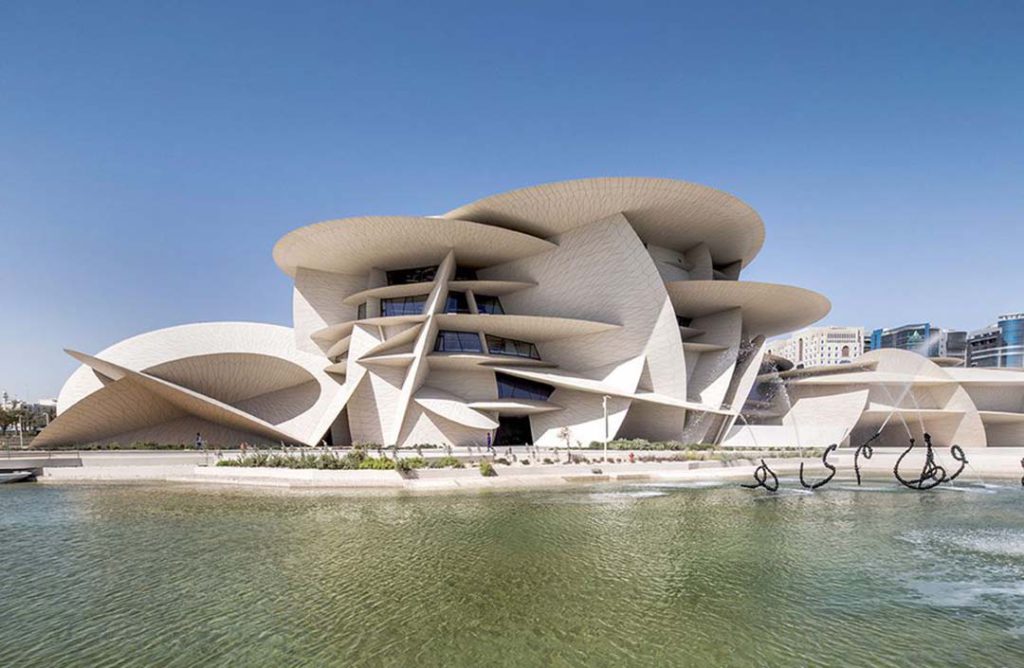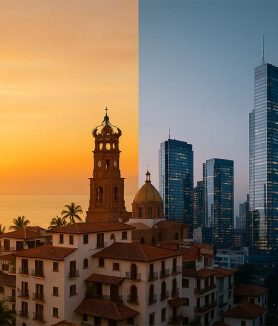After Qatar was selected by FIFA as the host country for the World Cup in 2010, the Arab country undertook the task of innovating, modernizing and, in a certain way, reinventing its architecture to be at the forefront and comply with the highest standards in terms of sustainability and design.
Undoubtedly, the pillar of the project were the eight stadiums in charge of, to mention a few, Norman Foster, Zaha Hadid and Fenwick Iribarren. In the design, priority was given to adapting the architecture to the needs of the World Cup, for example; first, facilitate accessibility; second, avoid high temperatures inside the enclosures; third, the sustainability of each project.
Sustainability and Innovation

Regarding sustainability, the stadiums were planned to be sustainable from an energy point of view through the use of solar panels, waste management and reuse after the World Cup, since six of the eight stadiums were built with modular materials that make them 100% removable or modifiable after finishing the World Cup.
In addition, the World Cup in Qatar is the first to have the ISO 20121 sustainability certification, which guarantees that the requirements are met to consider it a sustainable and neutral event in terms of carbon emissions.
Lusail Stadium, epitome of design
The Lusail Stadium, where the opening match was held and where some group stage matches have already been played, is the product of the design studio of Norman Foster, Pritzker Prize winner and one of the greatest representatives of contemporary architecture.
The design of the Lusail reflects the idea of traditional handmade Arab bowls and its lights give an effect of life to the outside.

“We raised the structure from the ground so that when people enter the stadium they come almost to the center (…) It gives a feeling of theater. We created this tight space inside, and then you walk out and you’re in this incredible stadium, you know, 80,000 seats, which is flooded with light. We wanted to create contrast between the interior and the exterior”, points out the architect Luke Fox, a member of the Norman Foster team.
“We had to work on a passive cooling system with some sort of fluid computing and dynamic modeling to make sure we brought the temperature down to pitch level for the players and all the fans as well. That was a great challenge. The refrigeration is carried out through lower levels under the seats ”, highlights Fox.
In addition, when the World Cup is over, the Lusail will be subject to a redesign to give it a second life and will be transformed. The exterior and roof will be maintained and the seats will be donated to countries that need this type of material.

These same quality and sustainability standards apply to other stadiums with innovative designs such as Al Janoub, with a capacity for 40,000 spectators and designed by Zaha Hadid; the Al Thumama from the firm Ibrahim Jaidah and capable of using 40% less water than a conventional one; AS+P Albert Speer’s Al Bayt with its cute Bedouin tent shape or Fenwick Iribarren’s 974, the first fully removable and reusable indoor stadium as it is built entirely from shipping containers and modular steel.
At the forefront of design
On the other hand, a fundamental part of the preparations for social and cultural attractions in Doha is given by the new buildings that, due to their design, have become true works of art, giving them attributes of technology, style, and modernity.

This is how Rem Koolhaas, I.M. Pei and Jean Nouvel, all Pritzker laureates, designed the National Library, the Museum of Islamic Art and the National Museum, respectively, while the Museum of Modern Art was assigned to Frenchman Jean-François Bodin.
In the medium term, Qatar has already announced that fellow Pritzker Jacques Herzog, Alejandro Aravena and the aforementioned Koolhaas will be in charge of the Lusail Museum, the Art Mill and the Automobile Museum.
The true cost
While it is true that Qatar did not skimp on the development of this mega project, the true cost of this World Cup is the lives of all migrant employees who died directly or indirectly in construction due to the extreme working conditions to which they were subjected, what today would be called modern slavery.
Specifically, an investigation by the English newspaper The Guardian puts 6,500 deaths in these tasks since 2010, while the organization Human Rights Watch (HRW) holds FIFA responsible for awarding the World Cup without due diligence in the field of human rights and without establishing conditions on the protection of the nearly 30,000 migrant workers employed in the infrastructures of the World Cup.
Figures that contrast with the 3 official deaths directly related to the construction of the stadiums and the other 37 indirectly that did not occur in the work areas.












